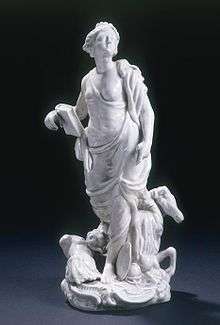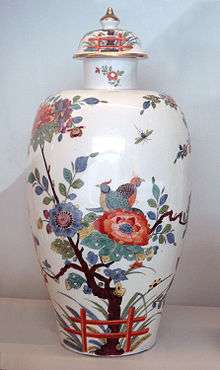Plymouth porcelain

Plymouth porcelain was a hard paste porcelain made in the English county of Devon in the 18th century.[1]
The porcelain factories at Plymouth and Bristol were among the earliest English manufacturers of porcelain. William Cookworthy, a Quaker Pharmacist of Plymouth, was greatly interested in locating in Cornwall and Devon minerals similar to those described by Père François Xavier d'Entrecolles, a Jesuit missionary who worked in China during the early eighteenth century, as forming the basis of Chinese porcelain. Père d'Entrecolles provided an account in two letters, the first written in 1712 and the second written in 1722, of porcelain manufacture at the town of Jingdezhen that included a detailed description of the two principal materials used to make porcelain, china clay and Chinese pottery stone. After many years of travel and research William Cookworthy determined that Cornish china clay and Cornish stone could be made to serve as equivalents to the Chinese materials and in 1768 he founded a works at Plymouth for the production of a porcelain similar to the Chinese from these native materials.
The factory was removed to Bristol in 1770 and was afterwards transferred to Richard Champion of Bristol, a merchant already involved in the fashionable pursuit of porcelain making. Champion's Bristol factory lasted from 1774 to 1781, when the business was sold to a number of Staffordshire potters owing to serious losses it had accrued. Bristol porcelain, like that of Plymouth, was a hard-paste porcelain.[2] It is harder and whiter than some other English porcelains, and its cold, harsh, glittering glaze marks it off at once from the wares of Bow, Chelsea, Worcester or Derby.
References
- ↑ See Cookworthy's Plymouth and Bristol Porcelain by F. Severne Mackenna (1947) published by F.Lewis and William Cookworthy 1705–1780: a study of the pioneer of true porcelain manufacture in England by John Penderill-Church, Truro, Bradford Barton (1972).
- ↑ "The Bristol Factory". Rod Dowling. 22 January 2013. Retrieved 2 October 2015.
![]() This article incorporates text from a publication now in the public domain: Chisholm, Hugh, ed. (1911). "article name needed". Encyclopædia Britannica (11th ed.). Cambridge University Press.
This article incorporates text from a publication now in the public domain: Chisholm, Hugh, ed. (1911). "article name needed". Encyclopædia Britannica (11th ed.). Cambridge University Press.

